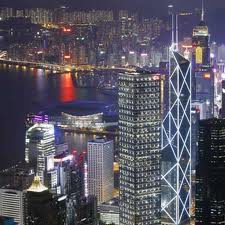A new study, albeit based on 2010 data, was just released by Vinexpo awarding Hong Kong residents top spot on the Asian continent for per capita wine consumption. The Wall Street Journal, reporting on the study last week, said the average Hong Kong consumer drank 6.3 bottles in 2010, about twice as much volume as Japan and Singapore residents and considerably more than the 1.5 bottles mainland Chinese consumers drank that year.
Interestingly, at the close of 2010 the Wine Spectator reported on 2010 worldwide auction sales totaling $408 million, with Hong Kong contributing $165 million to the total; a whopping 40% of global fine wine sold at auction. Important to note, Hong Kong only has 7 million residents and the French (leaders in global per capita consumption) drink 11x more per person on a population of 64 million, Italians ranking a close second in consumption with a population of 60 million, and Americans way down the consumption list at 15th and 2.5x Hong Kong’s consumption rates, but spread over 311 million citizens. While the Hong Kong auction market can be lamented for ruining high end Bordeaux pricing for average consumers, what are the odds that it can do the same in the broader wine market? Will every day drinking become more expensive around the world as Hong Kong continues to develop its love affair with wine?
Granted a lot of Bordeaux sold at auction in Hong Kong ends up on tables of new mainland Chinese millionaires. Still, the percentage of auctioned wine seeing hammers in Hong Kong compared with the rest of the world is totally out of context with its broader local wine market. Seven million residents can not consume enough wine to make a serious dent, even if Hong Kong residents eclipse the per capita consumption rate established by the regularly imbibing French. Logically speaking, Hong Kong’s impact on global market supply and demand economics should be a non factor compared with the Pearl River Delta tremors rocking the global auction market.
 How can there be such a disproportionate amount of high end, flush buyers in Hong Kong? The answer is China, fueled by new status seeking wealth and Hong Kong’s rescinded wine import tariffs. If Hong Kong can not move the broad global wine market, should China be able to? While the research points to the “average consumer” and does not relate per capita consumption to total populations (maybe only age appropriate wine drinkers?), if we took a liberty by implicating total populations then the Chinese consumed almost 2 billion bottles as a nation in 2010 while Hong Kong only drained about 44.1 million bottles. If the French continue drinking at their 2010 pace, they will go on to consume 4.6 billion bottles a year. Americans, according to these newly reported 2010 statistics, drank 4.9 billion bottles.
How can there be such a disproportionate amount of high end, flush buyers in Hong Kong? The answer is China, fueled by new status seeking wealth and Hong Kong’s rescinded wine import tariffs. If Hong Kong can not move the broad global wine market, should China be able to? While the research points to the “average consumer” and does not relate per capita consumption to total populations (maybe only age appropriate wine drinkers?), if we took a liberty by implicating total populations then the Chinese consumed almost 2 billion bottles as a nation in 2010 while Hong Kong only drained about 44.1 million bottles. If the French continue drinking at their 2010 pace, they will go on to consume 4.6 billion bottles a year. Americans, according to these newly reported 2010 statistics, drank 4.9 billion bottles.
Hong Kong can not move the broad market like China can. Until now, the Chinese have not completely caught on. Many still can’t afford the luxury and that will be very slow to change outside the major urban centers. But, having spent extensive time on the mainland entertaining and sharing my red wines, it became obvious that the long time Chinese tradition of drinking tannic tea with food is transferable to tannic wine and food. If their consumption ever doubled, it would be like adding a new wine consuming nation.
Still, the Party knows how to consolidate resources and should work hard to create a domestic supply to satisfy its expanding consumer market. Like every other sector of China’s consumer economy and its impact on worldwide trade, the script remains unfinished. Regardless, you have to look beyond Hong Kong’s leading per capita consumption and auction revolution to comprehend the legitimate potential for Asian disruption of global wine market economics. While Vinexpo’s study is interesting in terms of Hong Kong’s acceptance of wine in relation to other countries, the headlines lie across the Shenzhen border crossing.
